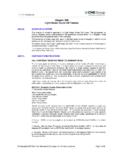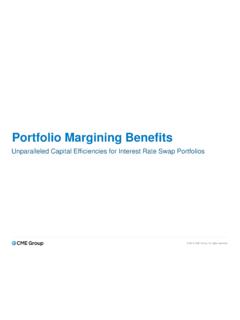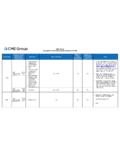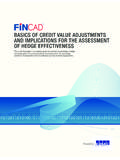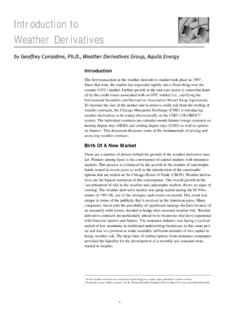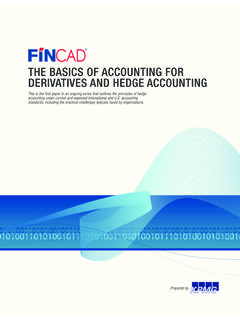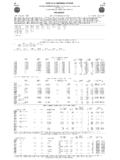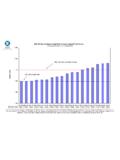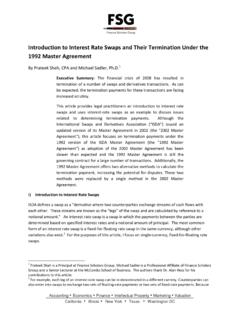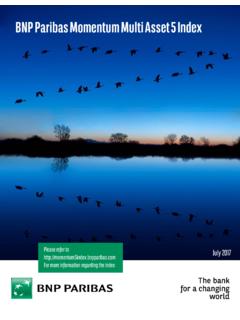Transcription of Stock Indexes Understanding Stock Index Futures
1 Stock Indexes . Understanding Stock Index Futures MAY 3, 2013. Financial Research & Product Development Stock Index Futures were introduced in 1982 on exchange pits via open outcry, beginning in 1997. domestic Futures exchanges and have since grown to The E-mini design was widely accepted and rapidly become perhaps the 2nd most significant sector, grew to become the most popular line of Stock Index after interest rates, within the Futures trading Futures available today. community. Actually, the concept of a Stock Index Futures Major E-mini Equity Futures ADV. contract had been discussed and analyzed for many 3,500,000.
2 Years prior to 1982, but a variety of regulatory and 3,000,000. intellectual property rights issues held the concept back. These issues were addressed by 1982, 2,500,000. leading to the introduction of Futures based on the 2,000,000. Standard & Poor's 500 Index (S&P 500) on the 1,500,000. Chicago Mercantile Exchange (CME) as well as many other Stock Index contracts. 1,000,000. 500,000. The basic model established in the early 1982 for the trade of Stock Index Futures was embraced on a 0. 2000. 2001. 2002. 2003. 2004. 2005. 2006. 2007. 2008. 2009. 2010. 2011. 2012. domestic and global basis by many other exchanges.
3 As a result, we now enjoy a vibrant array of Stock E-mini S&P 500 E-mini Nasdaq-100. Index Futures for access by institutional and retail E-mini ($5) DJIA E-mini S&P MidCap traders alike. Like all Stock Index Futures contracts, E-minis are Mechanics of Stock Index Futures valued at a specified contract multiplier times the spot or cash Index value. They call for a cash For the most part, our discussion focuses on several settlement at said value, generally during the extremely successful Stock Index Futures contracts contract months of March, June, September, and that share common design characteristics. We are December (the March quarterly cycle ).
4 These referring to the E-mini line of Stock Index Futures contracts are traded on electronic trading platforms products as offered on CME Group exchanges for most of the 24-hour weekday period beginning beginning in 1997. on Sunday evenings. These contracts are traded exclusively on electronic Exhibit 1 in our appendix below illustrates the trading platforms such as the CME Globex system contract specifications of the four most popular E- and constructed with relatively modest contract mini Stock Index Futures . sizes relative to the original or standard-sized . Stock Index Futures based on the particular Index . Contract Value & Quotation The original S&P 500 Futures contract, introduced in Stock Index Futures are quoted in terms of the 1982, was based on a value of $500 times the Index underlying or spot or cash Index value in Index value.
5 In the intervening years, equities generally points. Exhibit 2 in our appendix below depicts advanced in value. Thus, the exchange found it was quotations for the E-mini S&P 500 Futures contract. offering a contract with a high contract value. As a But the monetary value is a function of the contract result, the contract was split in 1997 such that the multiplier and quoted Index value. contract multiplier was halved from $500 to $250. times the Index . = Still, the contract value was high relative to many other extant Futures contracts. Thus, the exchange , June 2013 E-mini S&P 500 Futures contract offered an alternative E-mini S&P 500 contract settled at 1, Index points on April 23, 2013.
6 Valued at $50 times the Index and traded exclusively The monetary value of one contract may be on an electronic basis, as opposed to in the 1 | Understanding Stock Index Futures | May 3, 2013 | CME GROUP. calculated as $78,680. so-called triple witching hour where stocks , Stock options, and Stock Index Futures would all conclude = $50 1, = $78,680 trading at the same time of day on the 3rd Friday of the contract month. Stock Index Futures are quoted in a specified minimum increment or tick value. The minimum Pricing Stock Index Futures allowable price fluctuation in the context of the E- mini S&P 500 Futures contract is equal to Index Stock Index Futures cannot be expected to trade at a points.
7 This equates to $ per tick as shown level that is precisely aligned with the spot or cash below. value of the associated Stock Index . The difference between the Futures and spot values is often ! " # $ = % % referred to as the basis. We generally quote a Stock = $50 = $ Index Futures basis as the Futures price less the spot Index value. We may value and define the tick size of the four popular Stock Index Futures mentioned above as ' = ) * seen in Exhibit 3 in our appendix below. , the June 2013 E-mini S&P 500 Futures price Cash Settlement Mechanism was 1, with the spot Index value at 1, as of April 23, 2013. Thus, the basis may be quoted Stock Index Futures do not call for the delivery of the as Index points (= 1, 1, ).
8 Actual stocks associated with the Stock Index . Such a delivery process would be quite cumbersome to ' = 1, 1, = the extent that a Stock Index may be composed of hundreds or even thousands of constituents. The basis will generally reflect cost of carry . considerations, or the costs associated with buying The logistical difficulties are compounded to the and carrying the Index stocks until Futures contract extent that it's necessary to weight the delivery of expiration. These costs include financing costs, per each Stock issue by exacting reference to their the assumption that one is a leveraged buyer of the weights as represented in the Stock Index .
9 But the equities, and a payout represented by the dividends industry addressed this problem by introducing the that are expected to accrue until the Futures concept of a cash settlement mechanism. expiration date. Thus, the Futures price may be estimated as follows. A cash settlement is actually quite simple. After establishing a long or short position, market = ) * + - participants are subject to a normal mark-to- . /. market (MTM) like any other day. , they pay any losses or collect any profits daily and in cash. Fair Value Subsequent to the final settlement day, positions simply expire and are settled at the spot value of the The gap or difference between spot Index values and underlying Index or instrument.
10 Theoretical Futures prices is often referred to as fair value. This is the level at which Futures prices Domestic Stock Index Futures typically employ a final should be expected to trade, albeit not necessarily settlement price that is marked to a special opening where they will trade relative to the spot Index quotation (SOQ) on the third Friday of the contract value. month. The SOQ is intended to facilitate arbitrage activity by allowing arbitrageurs to enter market on = - . /. open (MOO) orders to liquidate cash positions at the same price that will be reflected in the final The fair value of a Stock Index Futures contract is settlement price.
